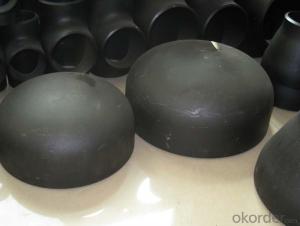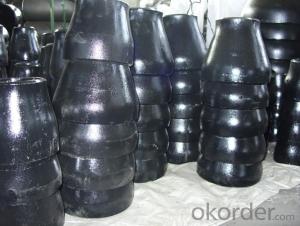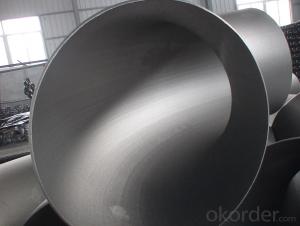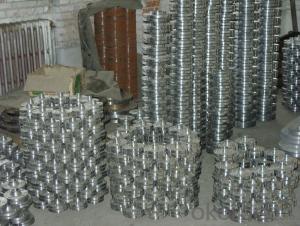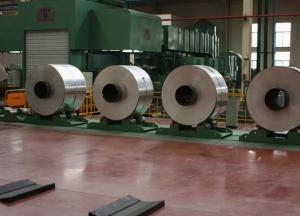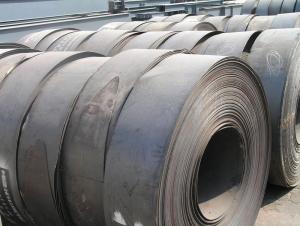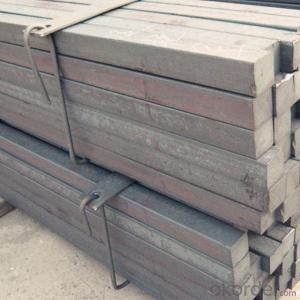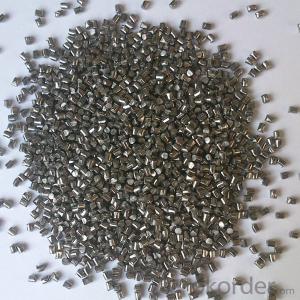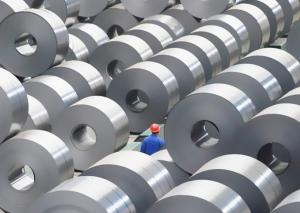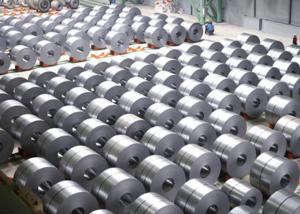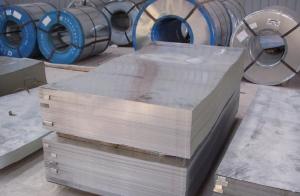Carbon Steel Pipe Fittings SA105 BEND
- Loading Port:
- China Main Port
- Payment Terms:
- TT OR LC
- Min Order Qty:
- -
- Supply Capability:
- -
OKorder Service Pledge
OKorder Financial Service
You Might Also Like
Specifications
pipe fitting elbow
Certificate:ISO:9001-2000
New material,completely meet asme and din standard
Best price
1. type: AISI ASTM A234 WPB BW Con Elbow
2. Size: 1/2"-48"(1/2"-24"is seamless and 26"-48"is welded)
3. Wall thickness: sch10-160, STD, XS, XXS
4. Material: A234WPB, A420WPL6, A420WP5, WP11, WP12, WP22, etc
5. Welding line: seamless
6. Angle of bend: 30, 45, 90, 180degree
7. Bending radius: SR, LR
8. Standard: ANSI B16.9, JIS, SB, DIN, GB
9. Surface treatment: black paint, vanis paint, black rust-proof oil,
transparent oil, hot galvanizing
10. Application: petroleum, electricity, chemical, natural gas, metallurgy,construction,
shipbuilding and other fields because of its high pressure, high temperature, etc
11. connection: welding
12. technics:forged
13.Certificate:ISO9001 - 2000, CE, SGS, etc.
14. packaging: wooden case, pallet, container or in accordance with the
requirement of customers
15. Principle: quality fist, customer first, credit first
16. payment: L/C T/T
17. delivery time: 7-25 days after payments
18. Notes: the bevel can be made in accordance with the special requirements
of the customers
19. Others: we can also produce the products according to the requirements
of the customers
The main production:
1. PIPE FITTINGS: elbows, tees, bends, reducers, cap, flanges and sockets etc.
2. PIPE: bult welded pipes, seamless pipes, threaded pipes, etc.
We sincerely welcom customers at home and abroad to visit us and seek common development.
- Q:How is steel profiled and cut?
- Steel is profiled and cut using various methods such as laser cutting, plasma cutting, water jet cutting, and mechanical cutting. Laser cutting involves using a high-powered laser beam to melt or vaporize the steel, resulting in a precise and clean cut. Plasma cutting involves using a plasma torch that generates an electrical arc and a high-velocity jet of ionized gas to cut through the steel. Water jet cutting uses a high-pressure stream of water mixed with abrasive material to cut through the steel. Mechanical cutting methods involve the use of saws, shears, or drills to physically cut and shape the steel. These methods offer different advantages depending on the thickness and type of steel being cut.
- Q:What are the different types of steel profiles used in machinery frames?
- There are several different types of steel profiles that are commonly used in machinery frames. Some of the most common ones include I-beams, C-channels, angles, and square or rectangular tubing. These profiles are chosen based on their structural strength, load-bearing capacity, and overall design requirements of the machinery frame.
- Q:What are the different types of steel bolts and their uses in the automotive aftermarket?
- There are several different types of steel bolts commonly used in the automotive aftermarket. Some of the most common types include hex bolts, flange bolts, carriage bolts, and socket head cap bolts. Hex bolts are the most widely used type of bolt and are typically used for general-purpose applications. They have a hexagonal head and require a wrench or socket for tightening. Flange bolts have a built-in washer under the head, which helps distribute the load and provide a more secure connection. These bolts are often used in applications where vibration or movement is a concern. Carriage bolts have a round, domed head and a square or ribbed neck under the head. They are commonly used in applications where a smooth finish is desired, such as attaching decorative accessories or trim. Socket head cap bolts have a cylindrical head with a socket drive and are commonly used in applications where a low-profile, flush finish is desired. These bolts are often used in engine components, suspension systems, and other areas where space is limited. Each type of steel bolt has its own specific uses in the automotive aftermarket, depending on factors such as load requirements, vibration resistance, and desired finish. It is important to choose the appropriate type of bolt for each application to ensure proper functionality and safety.
- Q:What are the common types of steel products used in the wastewater treatment industry?
- Some common types of steel products used in the wastewater treatment industry include stainless steel tanks, pipes, and fittings. These materials are chosen for their corrosion resistance and durability, ensuring they can withstand the harsh and corrosive environment of wastewater treatment plants. Additionally, steel products are often used in the construction of various structures such as clarifiers, sedimentation tanks, and pump stations within the wastewater treatment industry.
- Q:What are the different types of steel coils and their uses?
- There are several types of steel coils, including hot rolled, cold rolled, galvanized, and stainless steel coils. Hot rolled coils are commonly used in construction and manufacturing industries for structural applications. Cold rolled coils are used in automotive, appliance, and electrical industries for their superior surface finish and dimensional accuracy. Galvanized coils are coated with a layer of zinc, making them corrosion-resistant and suitable for outdoor applications. Stainless steel coils are highly resistant to corrosion and heat, making them ideal for food processing, medical, and chemical industries.
- Q:What are the different types of steel rails and their applications in tram systems?
- There are primarily four types of steel rails used in tram systems: grooved, Vignoles, bullhead, and flat-bottom rails. Grooved rails have a groove on the top surface, allowing the tram wheels to fit securely. Vignoles rails are commonly used in urban tram networks due to their durability and ease of installation. Bullhead rails have a symmetrical profile, making them suitable for heavy-duty and high-speed tram lines. Lastly, flat-bottom rails are versatile and widely used in tram systems worldwide. Each type has specific applications based on factors such as the tram's weight, speed, and the terrain it operates on.
- Q:What are the common types of steel products used in the pet grooming and care industry?
- The common types of steel products used in the pet grooming and care industry include grooming scissors, shears, clippers, and grooming tables. These steel products are essential for various grooming tasks such as cutting hair, trimming nails, and maintaining a clean and hygienic environment for pets.
- Q:What are the properties and characteristics of different steel products?
- Different steel products have various properties and characteristics depending on their composition and manufacturing processes. Some common properties of steel products include high strength, durability, and resistance to corrosion. Additionally, steel products can be categorized based on their specific characteristics such as hardness, ductility, and toughness. Moreover, different steel products can have specific applications due to their unique properties, such as structural steel for construction, stainless steel for food processing and medical equipment, or tool steel for manufacturing tools and machinery.
- Q:How do steel products contribute to the construction and infrastructure development sector?
- Steel products play a vital role in the construction and infrastructure development sector. They are widely used in various applications such as building structures, bridges, highways, and pipelines. Steel's high strength-to-weight ratio makes it a preferred choice for constructing tall buildings and large-scale infrastructure projects. Its durability and resistance to corrosion ensure the longevity and safety of structures, reducing maintenance costs. Additionally, steel's versatility allows for easy customization and adaptability to different architectural designs and engineering requirements. Overall, steel products provide the necessary strength, reliability, and flexibility needed for the construction and development of robust and sustainable infrastructure.
- Q:What are the different types of steel beams and their uses?
- There are several types of steel beams, including I-beams, H-beams, and wide flange beams. I-beams are commonly used in construction and offer excellent load-bearing capabilities. H-beams are often used in structural applications and provide more strength and stability. Wide flange beams are versatile and can be used in various construction projects, offering increased strength and durability.
1. Manufacturer Overview |
|
|---|---|
| Location | |
| Year Established | |
| Annual Output Value | |
| Main Markets | |
| Company Certifications | |
2. Manufacturer Certificates |
|
|---|---|
| a) Certification Name | |
| Range | |
| Reference | |
| Validity Period | |
3. Manufacturer Capability |
|
|---|---|
| a)Trade Capacity | |
| Nearest Port | |
| Export Percentage | |
| No.of Employees in Trade Department | |
| Language Spoken: | |
| b)Factory Information | |
| Factory Size: | |
| No. of Production Lines | |
| Contract Manufacturing | |
| Product Price Range | |
Send your message to us
Carbon Steel Pipe Fittings SA105 BEND
- Loading Port:
- China Main Port
- Payment Terms:
- TT OR LC
- Min Order Qty:
- -
- Supply Capability:
- -
OKorder Service Pledge
OKorder Financial Service
Similar products
New products
Hot products
Related keywords

